How to choose the right shed base |
||||||
 |
||||||
 |
||||||
Is a shed base essential? |
||||||
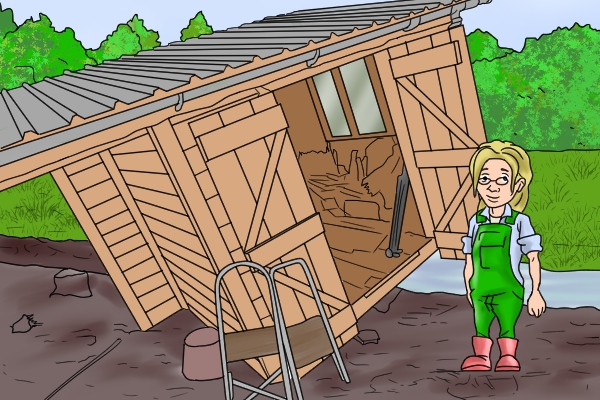 |
The base will be the only thing standing between your shed and the bare, damp ground, so don't be tempted to skimp on this basic requirement. A well-made base should ensure your shed remains level and stable for years to come, so it's vital to get the foundations right. If the base is uneven you'll find the wall and roof panels won't line up properly, the door might not shut, and the whole structure will be greatly weakened. |
|||||
|
The four main types of shed base are:
|
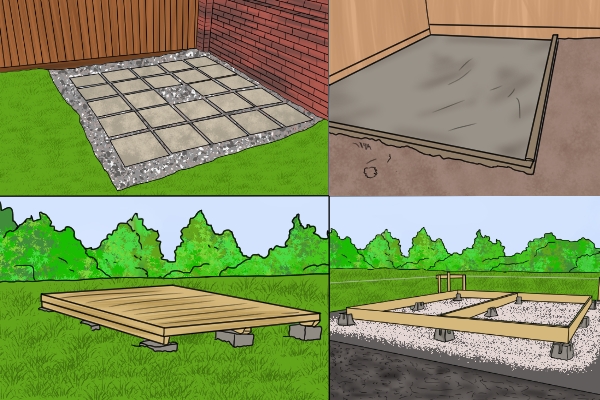 |
|||||
Timber bearer shed base |
||||||
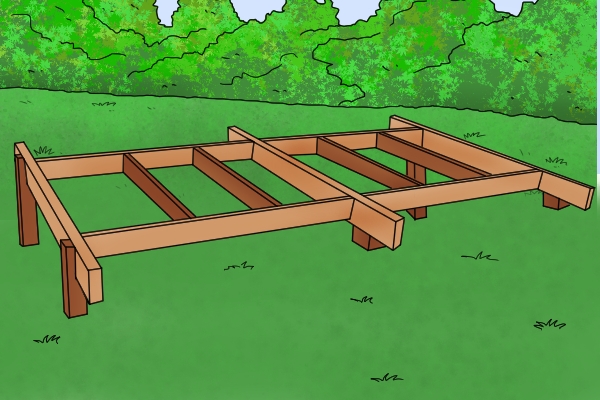 |
The most lightweight base can be made from wooden bearers. This type is ideal for people in rented accommodation who may not be allowed to have a permanent structure like a concrete base in the garden. It is also suitable for the less physically able who can't lift paving slabs or lay concrete. And it's much easier to move this type of base to a different point in the garden if desired. |
|||||
| It's advisable to buy a
rather than make your own from scratch, so you can be confident that the components will all be the right size and shape for the shed.
Wonkee Donkee Forest Garden stocks a range of wooden base kits in four sizes. For advice on putting the base together see: How to assemble a timber base kit. |
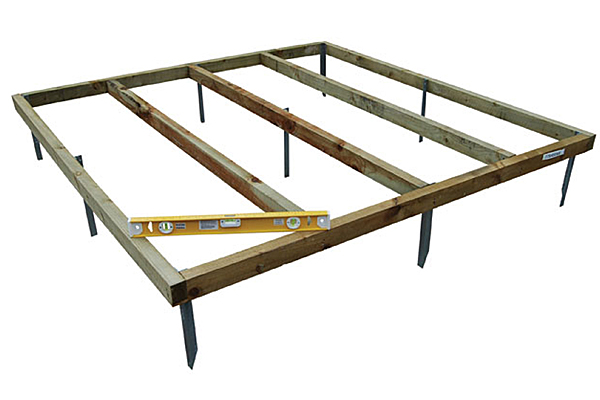 |
|||||
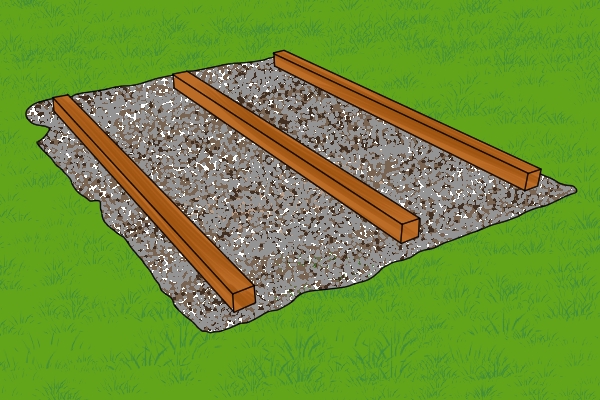 |
If a base kit isn't available to fit your size of shed, you can make your own by laying loose timber bearers in parallel rows on a bed of gravel. However, this will be less stable than a proper frame because the timbers won't be attached to anything. |
|||||
Concrete shed base |
||||||
A concrete shed base is a permanent fixture in your garden. It is strong, low maintenance and long lasting, but arguably also the most difficult type of base to lay well. For more information see: How to lay a concrete base. |
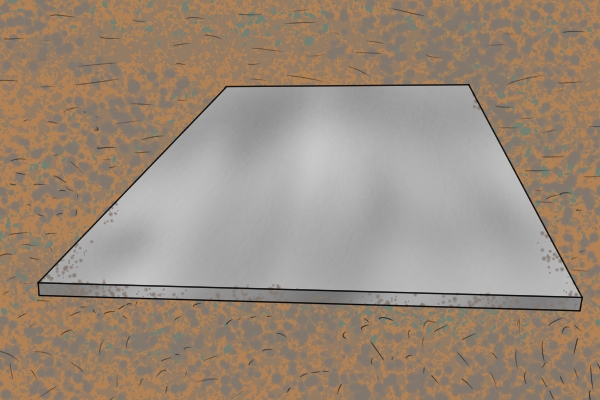 |
|||||
Paving slab shed base |
||||||
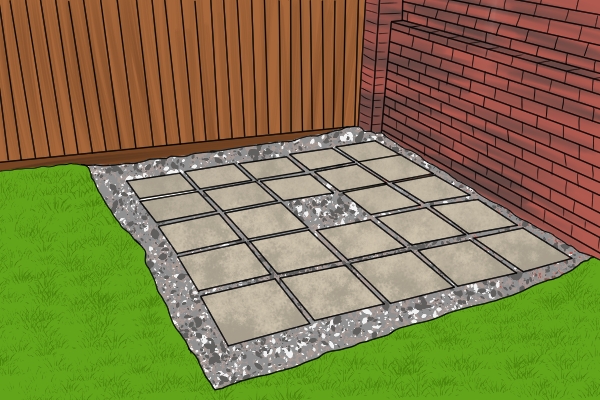 |
If you lack confidence in your DIY abilities and don't feel up to laying concrete, a paving slab base may be a good option. This forms a solid semi-permanent structure and can be taken up if necessary, so would suit people who are renting or who may be planning to move house in the future. For more information see: How to lay a paving slab base. |
|||||
Decking block shed base |
||||||
| Concrete decking blocks form an instant foundation system with no holes to dig and no concrete to pour. They are suitable for uneven and sloping ground, and use either floor support timbers, posts or both to form a level platform for the shed. For more information see: How to lay a decking block base. | 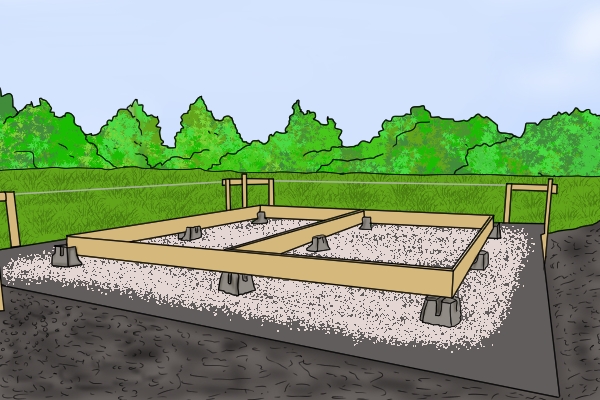 |
|||||
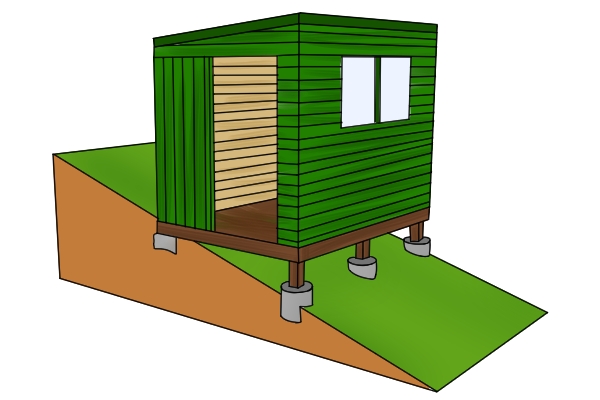 |
A variation on the decking block system is the post and pier base. This type of base is ideal when you have to build a shed on sloping ground, as you can slot timber posts of varying lengths into the blocks. |
|||||
How big should the base be? |
||||||
| Your base should normally be about the same size as the floor of your shed.
Some people like to create a larger base or lay paving slabs around the outside of their shed. This allows for easier, cleaner access and space to empty out items onto a hardstanding area. It also helps keep grass and weeds away from the shed walls. However, it may encourage damp by allowing rain to bounce off the protruding part of the base and up on to the walls. |
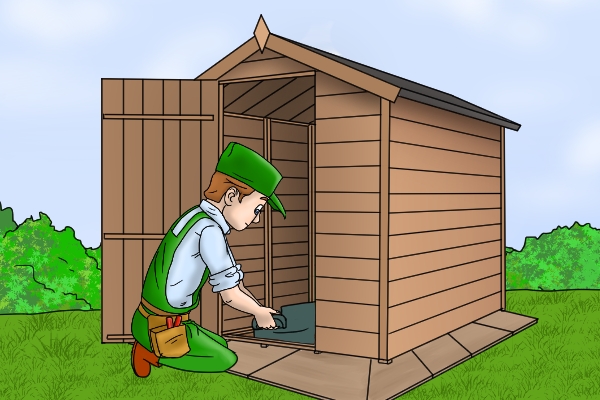 |
|||||







